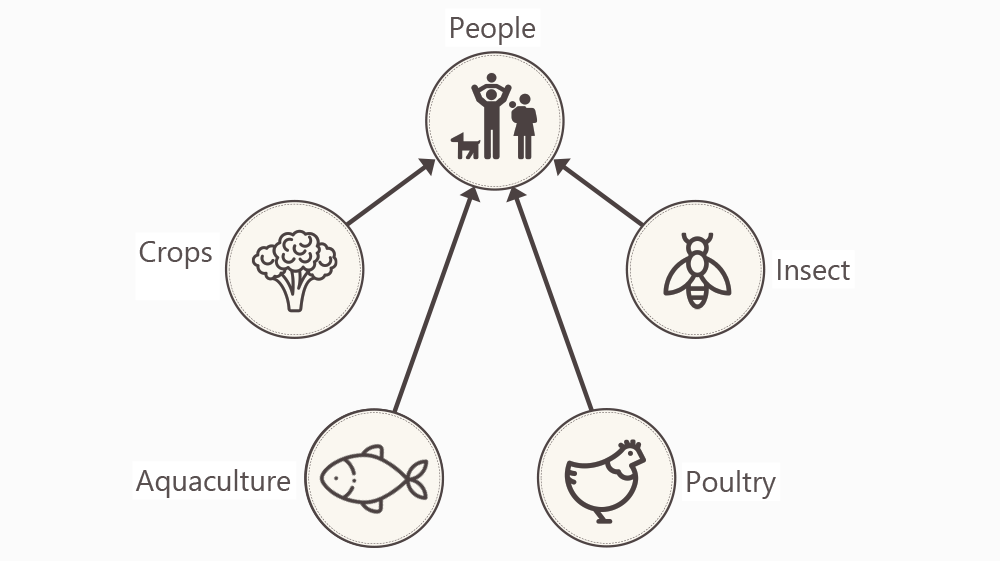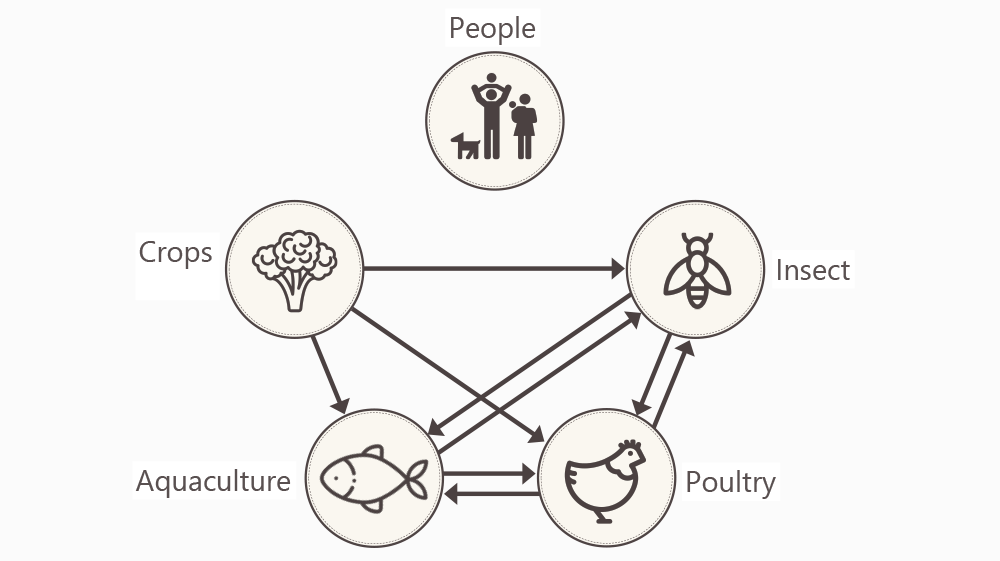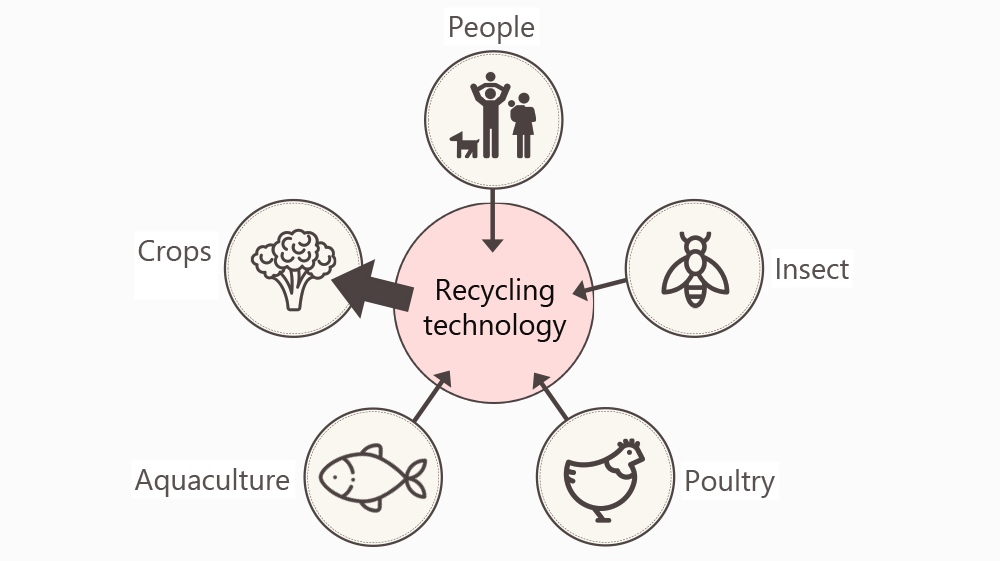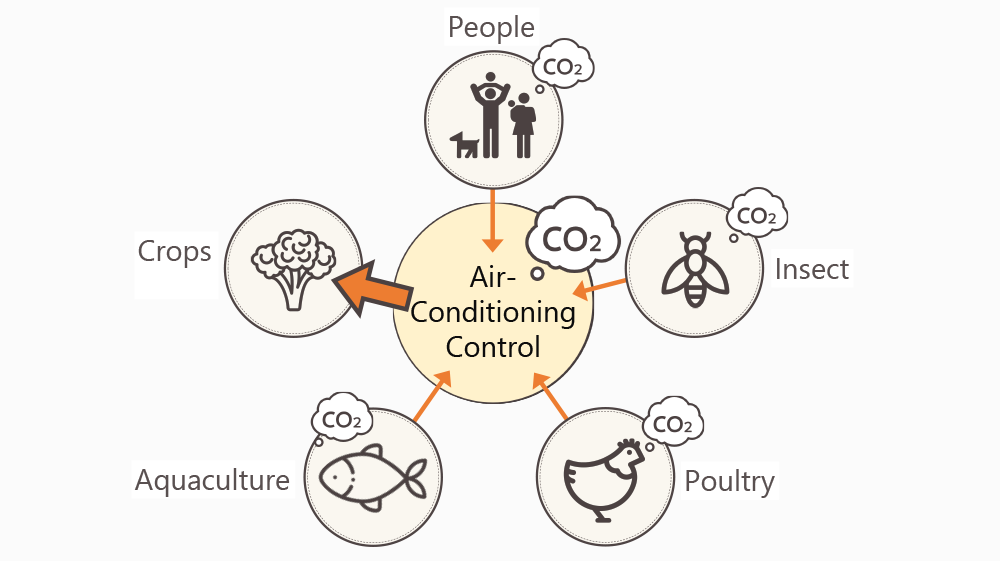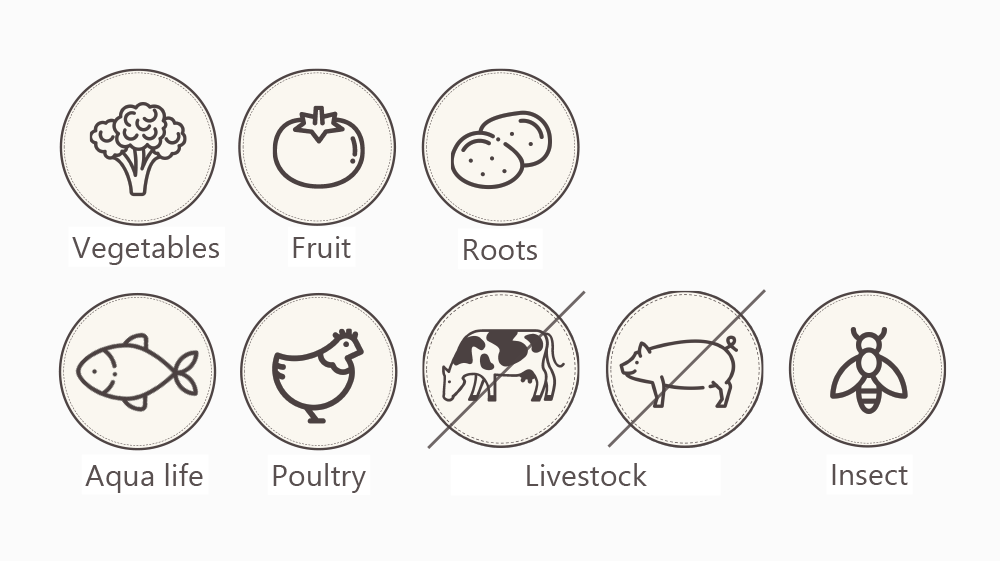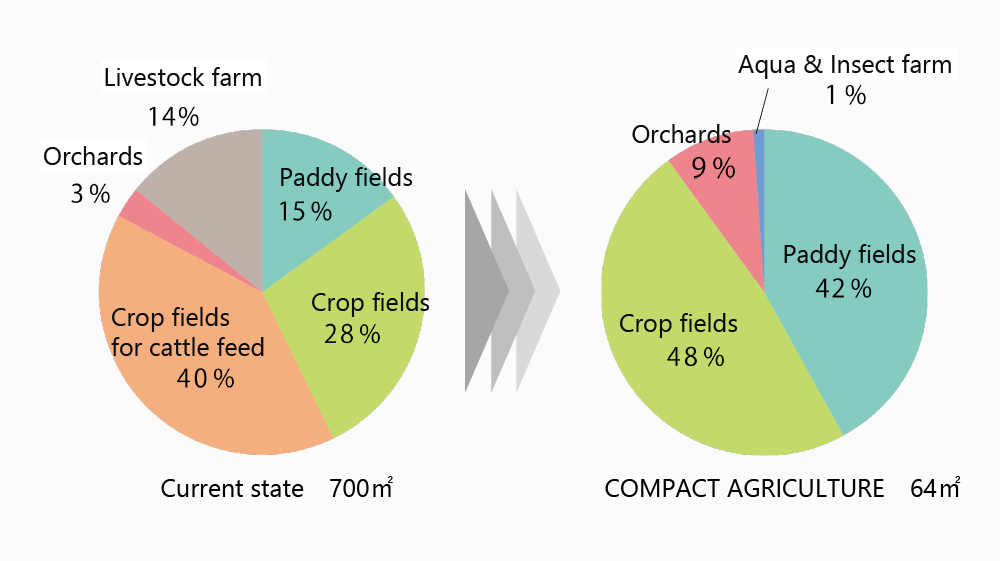The Sustainable Agriculture of the Future
The "Compact Agriculture" Concept
Concept: Obayashi Project Team
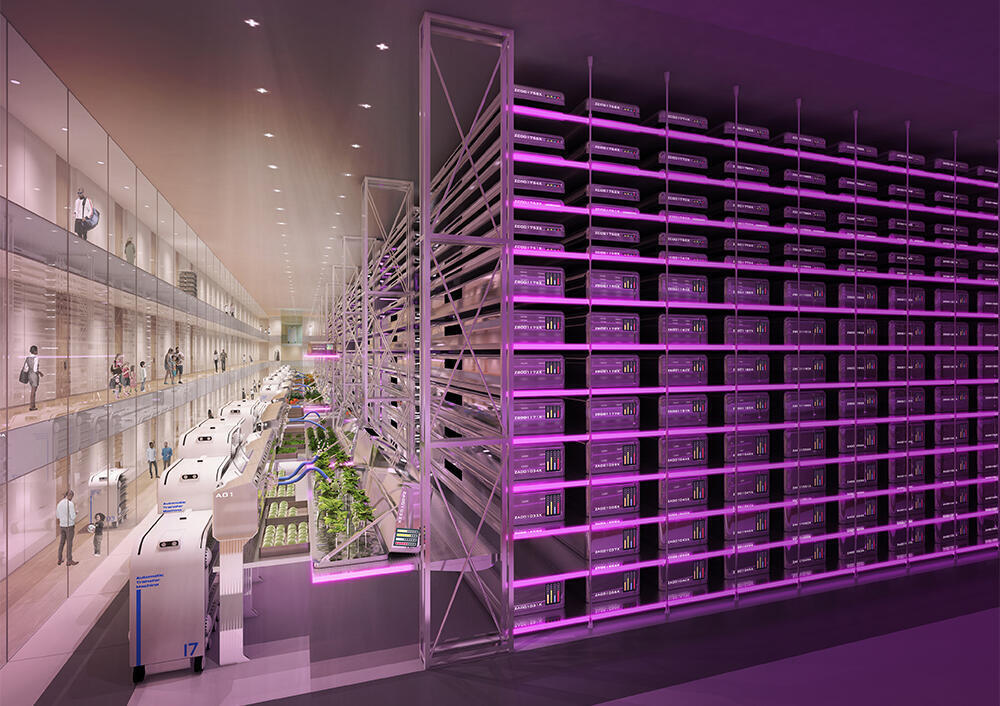
Agriculture has long faced a number of challenges in Japan: the nation's working population is declining and aging, and farming is considered a "3D" job-dirty, dangerous, and demanding. In addition, the value of gross production of agriculture is falling, and Japan faces a trade deficit for agricultural products. Thanks to technological advances and a diversity of business models in recent years, however, expressions like "smart agriculture," "agrobusiness," and "gainful agriculture" are more realistic and agriculture has real potential to become a leading-edge industry. Agriculture could provide a positive workplace, help feed people, and protect nature and the environment, and depending on the situation, we might even expect agriculture to make a comeback as a mainstay of Japan's national economy.
In terms of the environment, food waste and food loss are big problems around the world, even in Japan. And it should not be ignored that the practice of agriculture itself disrupts the true material cycling system and impacts the environment. Is it possible that technology has the power to solve even these environmental problems and bring us a new way of living with agriculture?
This concept visualizes what agriculture may be like in the future, once the technology sufficiently develops. Namely, in this vision, agriculture will supply people with an appropriate amount of food to sustain their lives, no matter the climate conditions in which it is practiced. There will be local production for local consumption. And all of this could happen without damaging the global environment.
Agriculture that Cycles even Material and Energy
Traditional agriculture produces crops by recycling organic resources: the farmer produces material, people consume it, and emitted material is recovered. The breakdown of this practice is a big factor disrupting the material cycle. Moreover, when farmers add new materials to the cycle, such as imported animal feed, there is more exchange of material beyond the cycle, which makes the problem even more complex.. Compact Agriculture, on the other hand, brings production and consumption closer together and introduces recycling technology so that human activity is separated from the natural world. Even the CO2 that people emit can be used to efficiently grow agricultural products. And by using renewable energy, Compact Agriculture and its system of circulation will run on renewable energy.
Material Cycling: Carbon Cycling
Automated High-efficiency Cultivation; Data-based Optimal Production
The concept behind Compact Agriculture is to efficiently produce agricultural products of optimal quality and quantity in little surface area. Based on the collected data, including citizens' height & weight, past illnesses, health status, food texture and taste preferences, and event schedules, produce will be provided at the right time and in exactly the amount needed.
The production facility is fully automated. It is equipped with environmental control so plants grow with maximum efficiency and automatic robots that cultivate the crops appropriately for their growth stage. Functional crops are produced according to individual needs. An automatic transportation system delivers produce to individual homes. People always get just the food they need, just when they need it. This eliminates food waste that happens in processes from production to consumption and which is so problematic today. It can also help limit food loss.
Food Production Surface Area per Citizen
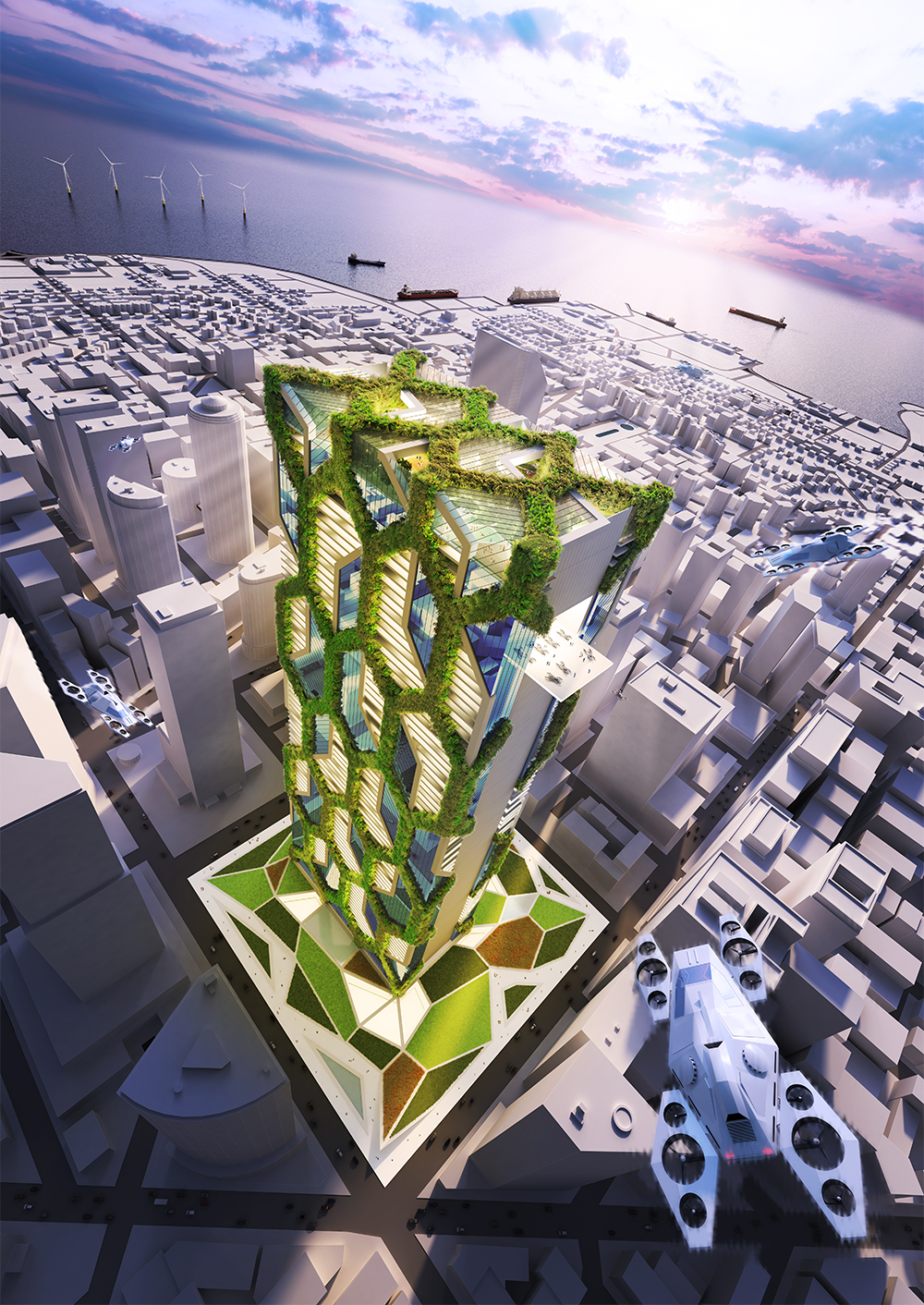
Agriculture in the midst of People's Lives
Living close to a food-producing farm is an effective way to help people value food in their lives. The "food producing factory" used in Compact Agriculture is in a sense inorganic, but it places agriculture right at the heart of people's communication. Citizens will not go inside the production facilities, which are completely controlled, but they will be able to see the production facilities close to their living spaces. There will be places to encourage communication: a home garden where citizens can get hands-on experience, stands of crops that let viewers personally experience how the crops ripen and are harvested, and screens depicting the state of food production in the factory. Citizens will naturally come to value the food they consume.
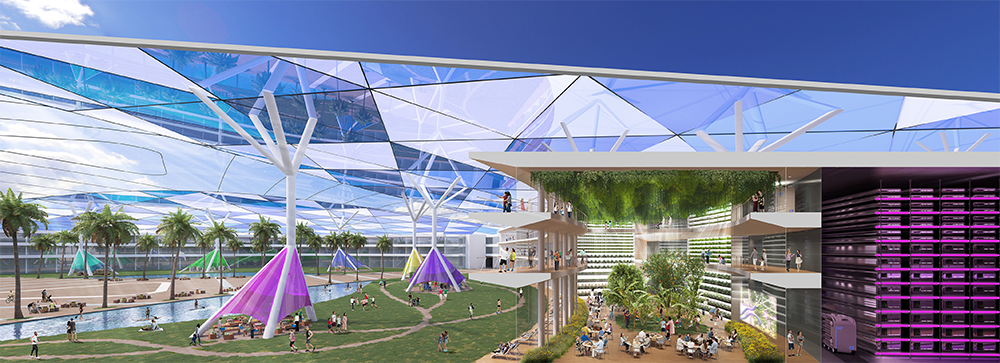
Most people in Japan do not have many opportunities to see how agricultural products grow because they are produced so far from the cities. As agriculture evolves, however, the day is coming when people will be able to enjoy a life where they can personally experience how their food grows.


